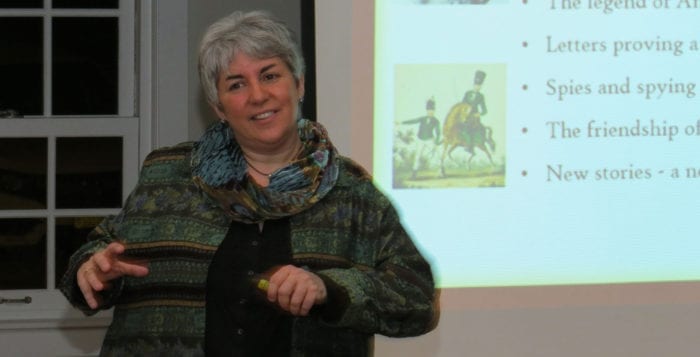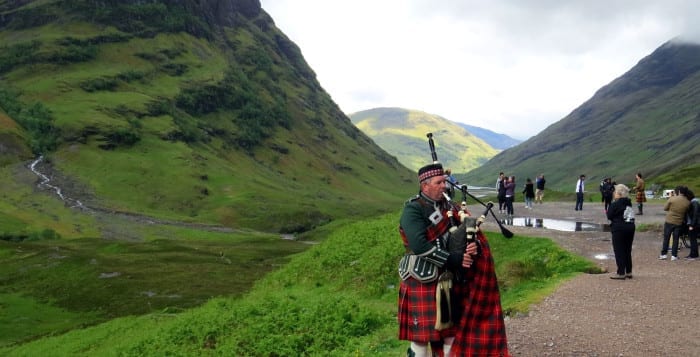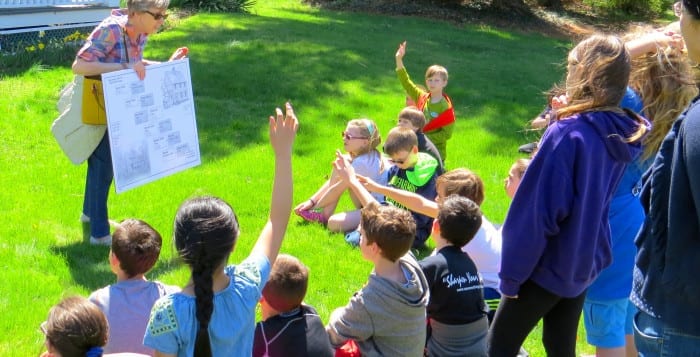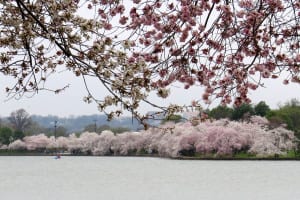By Beverly C. Tyler
“Spies” Nest: Major John André’s Activities at Raynham Hall in Oyster Bay, was the featured program for the Three Village Historical Society’s free lecture series at the Setauket Neighborhood House Feb. 27.
Historian Claire Bellerjeau presented her famed lecture on the British Revolutionary War spymaster John André to an eager audience of historians, history buffs, society members and the general public. Bellerjeau began her dramatic presentation by reminding the audience that there has been a great deal of misinformation written and presented as fact about the people and events of the Revolutionary War over the past two-and-a-half centuries. Many of the stories and tales surrounding the activities of British officers and their relationships with the Townsend family in Oyster Bay have grown with the telling and were perpetuated by writer after writer using the same undocumented sources that became the justification around which a dramatic story was created.
Bellerjeau, presently an historian for the Raynham Hall Museum in Oyster Bay, the ancestral home of General George Washington’s Culper Spy Robert Townsend, traveled to the archives of the New York Historical Society, the William L. Clements Library in Michigan and to Toronto, Canada to research the Revolutionary War era documents that tell a more accurate, and no less dramatic story of the events surrounding the life and death of Major John André, the chief of British intelligence in New York City who worked secretly to assist Continental Army General Benedict Arnold in his effort to turn the American fortress at West Point over to the British.
André visited the British headquarters of British Major John Graves Simcoe at the Townsend home, now Raynham Hall, in Oyster Bay a number of times as the two British officers were friends who corresponded with each other regularly. However, the story of Sally Townsend overhearing a conversation about General Benedict Arnold between the two officers and informing her brother Robert Townsend—alias Samuel Culper Jr. of the Culper Spy Ring—is just that, a story, as the facts uncovered by Bellerjeau definitely place them in other locations at that critical time.
Bellerjeau’s enthusiastic presentation featured the actual documentary evidence she uncovered which also included material by Long Island historian Benjamin Franklin Thompson of Setauket and other historians, as well as original documentary evidence in the archival collection of the East Hampton Library.
For additional information on the Setauket-based Revolutionary War Culper Spy Ring and the role of British spy Major John André, visit the Raynham Hall Museum in Oyster Bay and the SPIES! Exhibit at the Three Village Historical Society History Center on North Country Road in Setauket.
The next Three Village Historical Society lecture series presentation will be a pot luck supper and lecture “The Witchcraft of Goody Garlick” presented by Tata Rider at the Setauket Neighborhood House Monday, April 17 at 7:00 p.m. The public is invited to this free program, just bring a covered-dish entree that serves six. A wine and cheese reception at 6:00 p.m. will precede the supper and program. Sponsored jointly by the society and the Setauket Neighborhood House Association.
Beverly Tyler is Three Village Historical Society historian and author of books available from the Three Village Historical Society, 93 North Country Road, Setauket. For more information call 631-751-3730 or visit www.tvhs.org.









